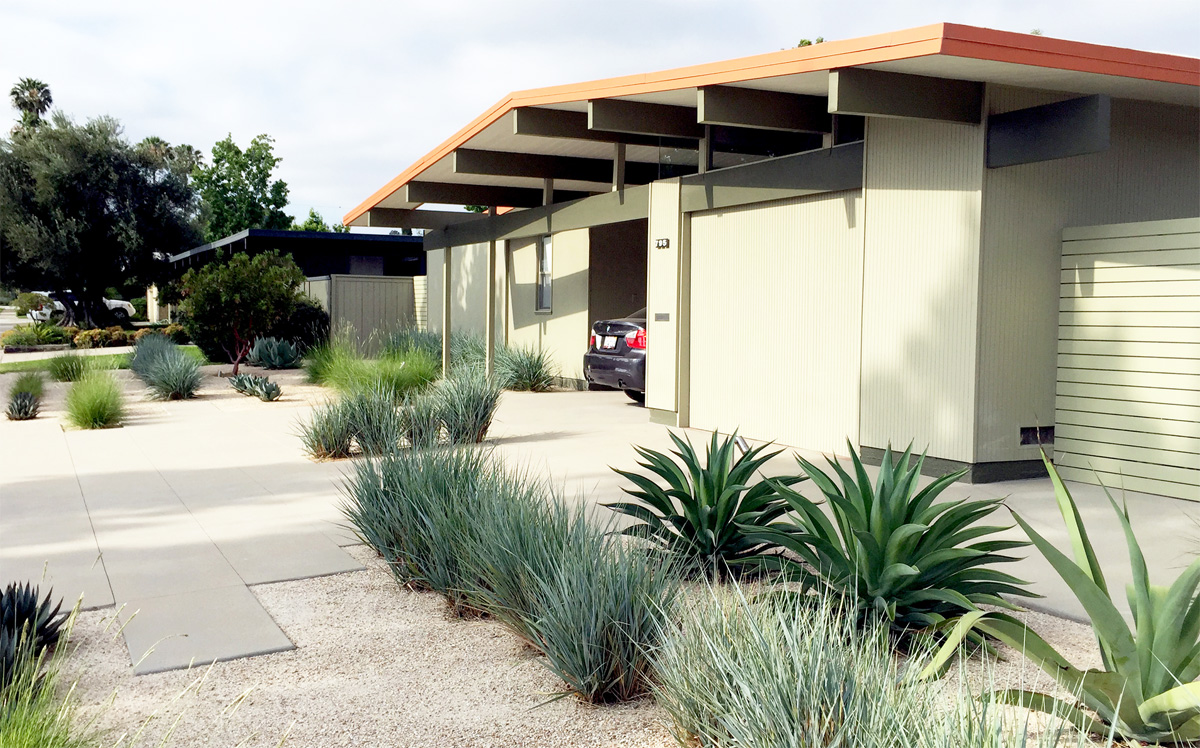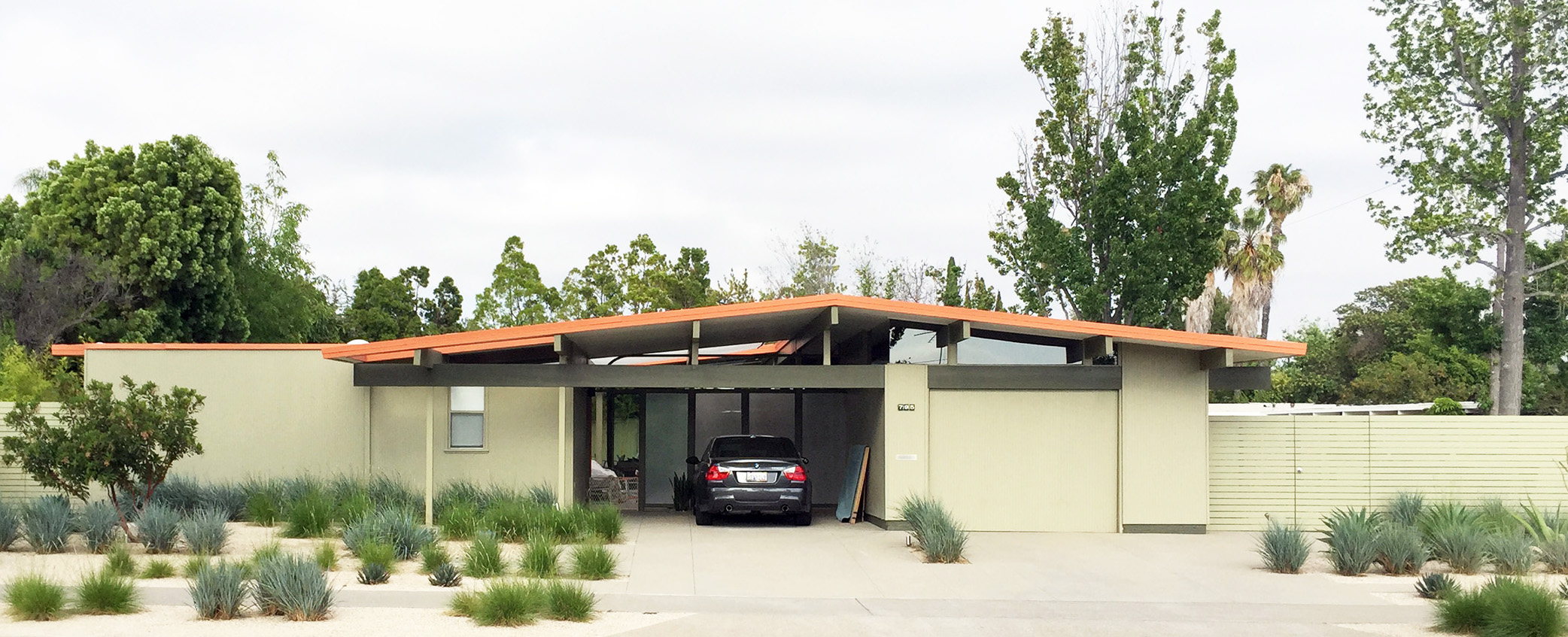House of Questions
 |
|
|
 |
|
Terremoto Landscape Architecture (right). |
 |
|
|
The weather people out there have been reminding us, even in the midst of recent winter rains, that the drought is not over.
With that in mind, how can we still achieve the front and back yards of our dreams—and in a responsible way—when the whole state is parched? Now, as we're edging into spring, what do we do with our mid-century modern gardens? What's the best approach for landscape design today, and what should we look for in new plantings?
We asked two Eichler Network landscape architects, Steve Ritchey of Seed Studio and David Godshall of Terremoto Landscape Architecture, and they had no dearth of direction to offer for drought-achieved dreams.
What are the challenges in design and plant selection when water use is such an issue?
Godshall: "The main challenge of landscape design in these water-scarce times is that drought-tolerant landscapes often look fundamentally different than the conventional residential landscapes people have become accustomed to. There is greater seasonality and the nuances are softer and more refined. People sometimes have the expectation that all plants should look green and fantastic at all times, and that's unrealistic if, say, you're planting with a native plant palette.
"So educating clients becomes part of the project, but it generally engenders a stronger project [because] a client who is more involved in the design of the project is often more excited with the finished product.
"All that said, there still exists an incredible range of plants that are drought-tolerant that are absolutely beautiful. South African plants are entirely appropriate throughout much of California. Arid, desert plants can be a sublime choice. Australian plants often do well here...and when you start to layer these horticultural worlds, you can go interesting places."
Ritchey: "People tend to be more attracted to lush, green landscaping, which of course typically requires higher water use. So, the main challenge is how to design a landscape that is successful in the eyes of the client while using an appropriate amount of water.




